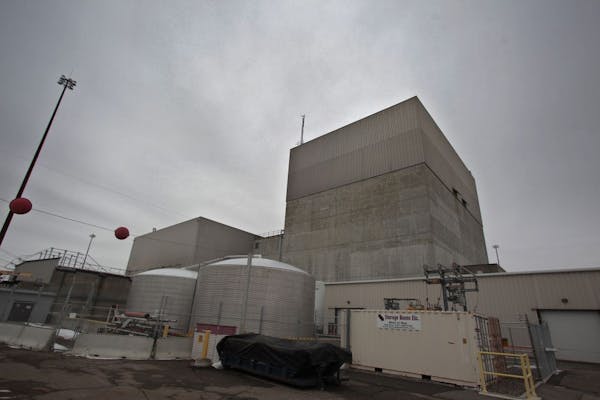Xcel Energy's Monticello nuclear power plant on the bank of the Mississippi River has long been unprepared for worst-case flooding, federal regulators said Tuesday in a finding they classified as having "substantial safety significance."
U.S. Nuclear Regulatory Commission (NRC) inspectors said Xcel's flood-fighting efforts, including dikes, could not have been completed in the 12 days required, and some work would take twice that time.
Xcel, which owns and operates the plant 40 miles northwest of the Twin Cities, said it has addressed the problem by putting dike-building materials on site. As a result, NRC inspectors said, the issue is "not a current safety concern."
But the finding, which is preliminary, is the Monticello plant's most serious safety shortcoming since the NRC adopted a color-coded, four-step ranking system for inspection results. This problem was ranked "yellow,'' one level short of the "red,'' or most serious, level. (The two lowest levels are "green" and "white." )
Xcel has 10 days to challenge it, and the plant faces enhanced inspections if the finding stands.
Three other U.S. nuclear power plants belonging to other utilities also have been cited recently for unsatisfactory flood-fighting plans after a round of inspections prompted by the 2011 tsunami and disaster at the Fukushima Daiichi nuclear power plant in Japan, an NRC official said.
"This is in response to Fukushima," said NRC spokeswoman Viktoria Mitlyng in an interview. "The NRC has obviously a heightened sensitivity and emphasis on things like response to natural disasters."
In the Japan disaster, power to the nuclear reactors was knocked out by floodwaters after an earthquake and tsunami. As plant operators struggled to control the units, hydrogen built up inside the reactor buildings causing several explosions.
Federal regulations to address worst-case flooding have been around for years, Mitlyng said. At Monticello, the preparations call for building temporary dikes and taking other steps to hold back floods at a level more than 20 feet above the worst flood on record, she said.
"We are talking about a postulated cataclysmic flood in the area," she added.
Inspectors began reviewing Monticello's plans in September 2012 and concluded that Xcel couldn't build protections quickly enough because it would take extra time to acquire dirt for a dike and steel plates to enhance it.
In an e-mail Tuesday, Xcel said it now has enough dirt and metal plate on site.
In a statement, Xcel Chief Nuclear Officer Tim O'Connor said the plant has long planned extensively for extreme flooding, and had contracts for materials to build the berm if ever needed.
"Because the materials are on site, the potential safety concern has been resolved," O'Connor said.
Xcel faces no penalty if the "substantial safety significance" finding is confirmed. But it would be put in a category of more closely monitored plants, which would require enhanced federal inspections.
David Shaffer • 612-673-7090 @ShafferStrib
